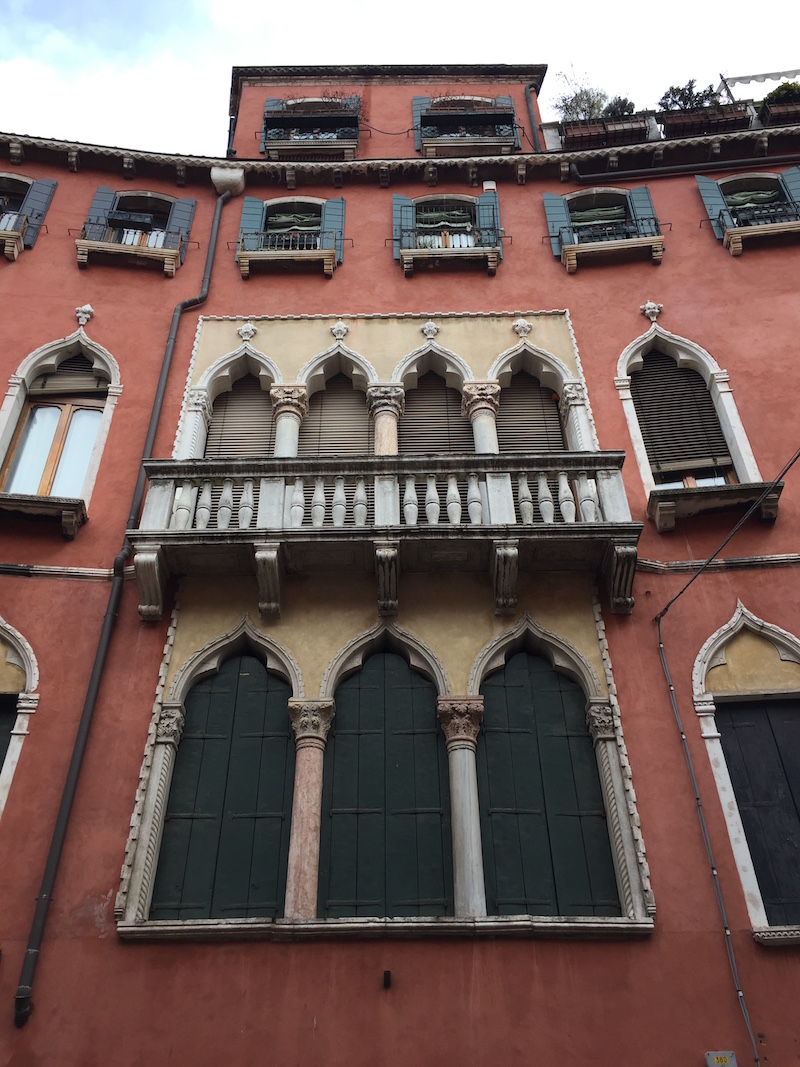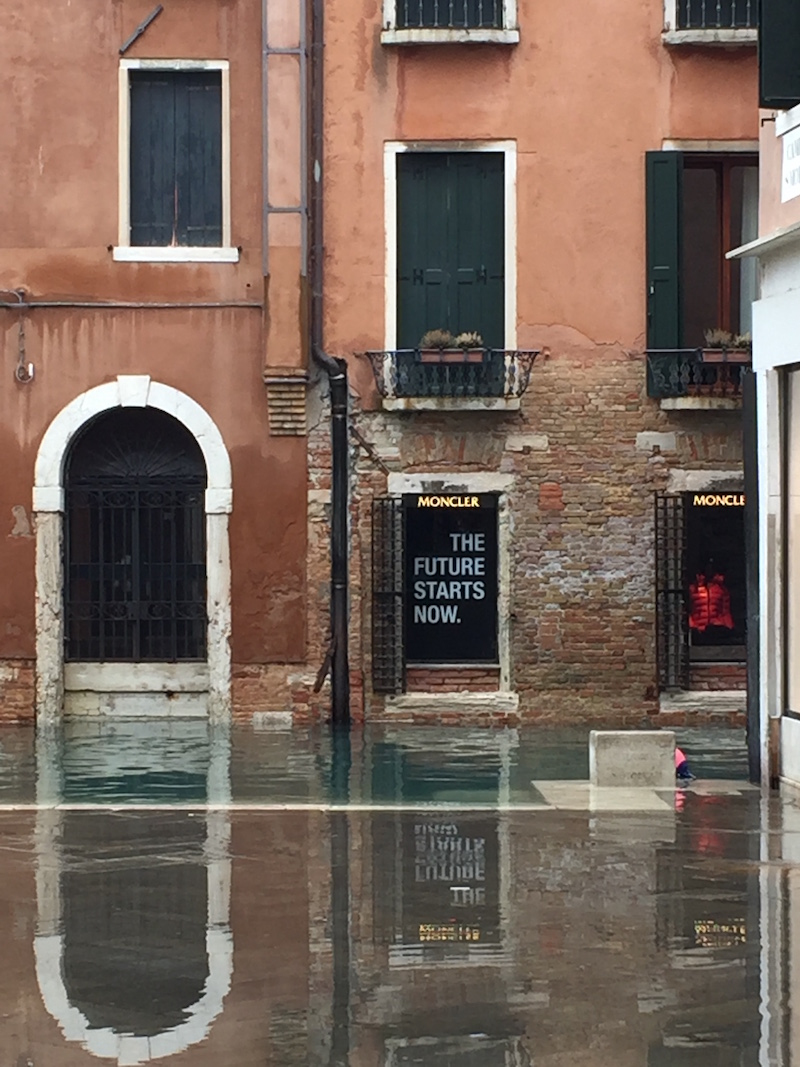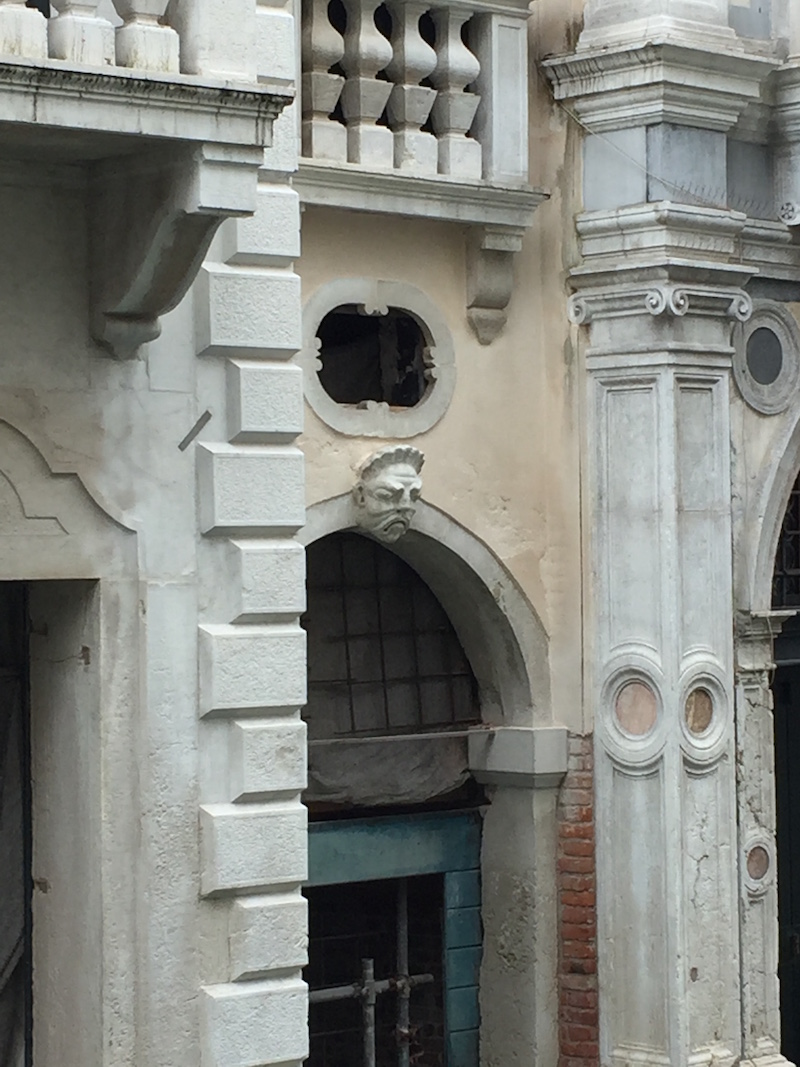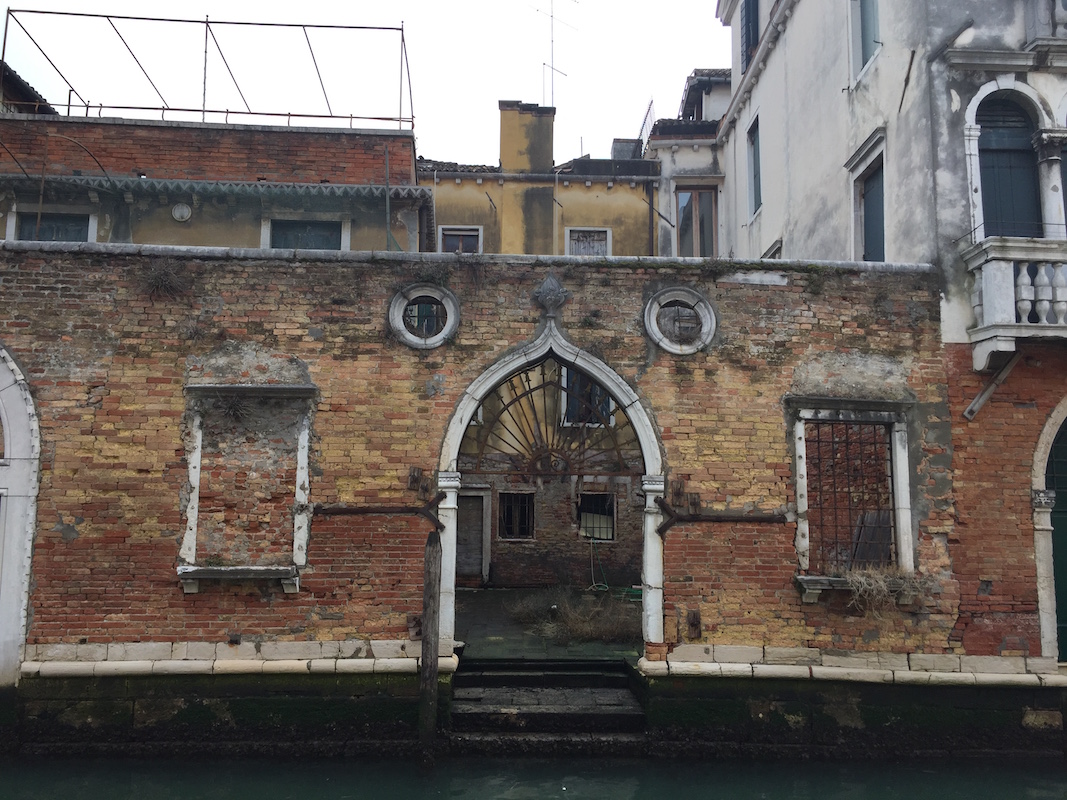The week before John Ruskin's 200th birthday, a group of Guild Companions, colleagues and friends spent the weekend of 2nd and 3rd February 2019 in Venice, to participate in the city's celebrations of this landmark occasion. Companion Malaika Cunningham, from Sheffield, was awarded a bursary by the Guild to attend the weekend, and this is her report of her visit.
Two weeks ago I had the great pleasure of joining Guild Master Clive Wilmer, Ruth Nutter, Howard Hull and his wife Pamela on a trip to Venice. The trip was a part of an ongoing collaboration between the Guild of Saint George and the Scuola Grande di San Rocco. Over the two full days we spent in Venice we walked very much in Ruskin’s shoes and the trip, for me, felt like an opportunity to learn how to see: to look more closely at details within a wild, technicolour whole; to see the humanity within small moments of design and artistry; and find peace in this deeper observation. In close synchronicity with the theme of the power of seeing for this bicentenary year- I feel that the trip offered me a wide view lens, not only to better see Venice, but also to better appreciate details and moments in everyday life back home.
We wandered the streets- noting the stories told by the patterns and character of the stones of the city. On this first morning it felt that we were warming up- preparing our senses by pausing to observe the details of narrow streets and modest palaces, in order that we might see Piazza San Marco properly. However, I doubt much can prepare you for the spectacle of San Marco. Nor do I feel my description of emerging into that square could compare to Ruskin’s own:
And then we forget them all; for between those pillars there opens a great light, and, in the midst of it, as we advance slowly, the vast tower of St. Mark seems to lift itself visibly forth from the level field of chequered stones; and, on each side, the countless arches of the colonnade prolong themselves into ranged symmetry, as if the rugged and irregular houses that pressed together above us in the dark alley had been struck back into sudden obedience and lovely order, and all their rude casements and broken walls had been transformed into arches charged with goodly sculpture, and fluted shafts of delicate stone. (The Stones of Venice 2, 1853)
The square, like much of Venice, was completely flooded and so we were treated to two Basilicas: one standing and one reflected in the water.
The flooding itself was an important character on this trip. Twice a day, at high tide, half the city would flood. A siren at 7.30am informed residents of the height of the tides that day. Main streets had raised platforms for the city dwellers to walk along, although many side streets were impassable without wellington boots (which only Clive was clever enough to pack). The shops would all close and when the tides began to recede you could see the shopkeepers sweeping the water out so that they could open. This was a normal part of life for them and, for me, felt somewhat dystopian. The humans of Venice have adapted, and are adapting, to a city which is increasingly unliveable.
Once we had navigated the waters surrounding San Marco we made our way to the Scuola di San Giorgio degli Schiavoni – the Scuola which probably gives the Guild of Saint George its name. Entering it, in some ways, is the opposite of entering the Piazza San Marco. We went from a bright afternoon into a dark, intimate and peaceful space. Each wall is covered with Carpaccio’s depictions of the saints of the Scuola: Saint George battling the dragon (this painting forms the Guild’s logo), Saint Jerome with his lion and Saint Tryphon, a child who exorcized demons. As a theatre maker, this was an exciting place to be as it was full of stories. I particularly enjoyed the secondary characters- the nonchalant parakeet in the Triumph of Saint George, the strange anteater tied to a tree in the Funeral of Saint Jerome and the fluffy little dog in the depiction of Saint Augustine in his study. I am told these animals caught Ruskin’s imagination too and he sketched many of them.
The final destination of the day was the Scuola San Rocco itself. Again, I turn to Ruskin to articulate the awe of the space:
I never was so utterly crushed to the earth before any human intellect as I was to-day – before Tintoret. ... He took it so entirely out of me... that I could do nothing at last but lie on a bench and laugh (from a letter to his father after first seeing Tintoretto’s paintings at the Scuola, September 1845).
I cannot say that the paintings had quite this effect on me, but I could understand why someone may have this response. They are familiar Biblical stories told in a very different way: urgent, emotional and very human. The strength and importance of women is also highlighted in these works- particularly those in the downstairs space. The paintings on the left hand wall tell the story of Mary and Joseph fleeing with their infant Jesus in The Flight into Egypt, whilst Herod orders infanticide in the Massacre of the Innocents. It feels tragically current- a story of epic violence and the refugees who flee.
By the end of the day my eyes were wide and details vivid. It is an overwhelming way to see the world when in Venice- which already feels like a kind of heightened reality.
The following morning we attended a service in honour of John Ruskin at Saint George’s Church with the Scuola di San Rocco. Clive gave the address, which drew on the close relationship between Ruskin’s political philosophy and his faith. For Ruskin religion was not sequestered in churches, but was in nature, like the ocean surrounding Venice- and where the natural was celebrated (like in the beautiful façade of the San Marco basilica), there we find God. He argued that it is ‘not that the Church is not sacred – but that the whole Earth is’ (from ‘Traffic’, a lecture Ruskin delivered in Bradford in 1864, quoted by Clive in his address). I was raised a Quaker and, although I am no longer practising, this sentiment had great resonance with the teachings of my childhood. We can find sanctity in everyday things- light falling through leaves, the quiet of sunrises and “the sea breaking on the Zattere”. And whilst they are ‘everyday’, it is in remembering to see them anew that we find their sanctity and power.
Clive also spoke of Ruskin’s work on economic justice in Unto this Last (1860), which is taken from the Parable of the Vineyard in Matthew’s Gospel (which was read by Emma Sdegno in Italian earlier in the service). Here, his political philosophy brought back to faith. Clive quotes Ruskin,
I know no previous instance in history of a nation's establishing a systematic disobedience to the first principles of its professed religion. The writings which we (verbally) esteem as divine, not only denounce the love of money as the source of all evil, and as an idolatry abhorred of the Deity, but declare mammon service to be the accurate and irreconcilable opposite of God's service: and, whenever they speak of riches absolute, and poverty absolute, declare woe to the rich, and blessing to the poor.
And perhaps this is even truer today than it was in Ruskin’s time. There we sit in a church in a sinking city whilst in between floods people still flocked to buy designer clothes and Venice themed fridge magnets.
This draws attention again to Ruskin’s impressive vision: not only in the beauty around him and overlooked details of architecture. But also in seeing the wider social picture- seeing connections between inequality, consumerism and environmental destruction, which even today many fail to acknowledge. His vision seemed to reach into the future and his work, even now, can seem ahead of its time.
Trying to see into the future is of key importance to my own work now, as I create spaces for people to discuss how they would like the world to be and challenge them to imagine something other than what we have. Ruskin’s body of work seems to typify a philosophy I now hold at the centre of my practice: recognise and learn from what has gone before, and use the present to create and protect that which may be cherished in the future. I end with another Ruskin passage which puts this sentiment better than I could put it myself: Our duty is to preserve what the past has had to say for itself, and to say for ourselves what shall be true for the future (from Modern Painters 4, 1856).

Warming up on our way to Piazza San Marco. Notice each shaft is made of a different stone, each showcasing a different design of acanthus leaves on the capital.

An eerie and untended symbolism in the floods

The devil is in the detail

